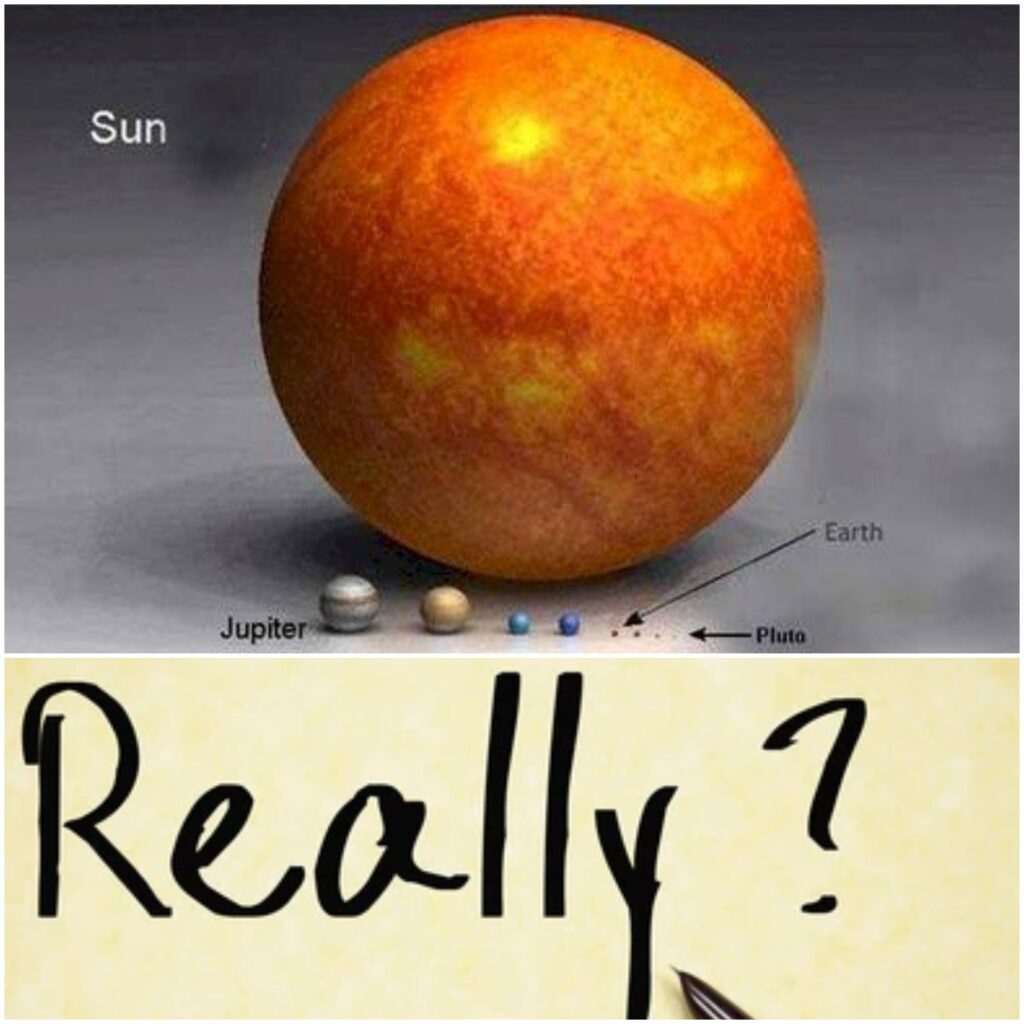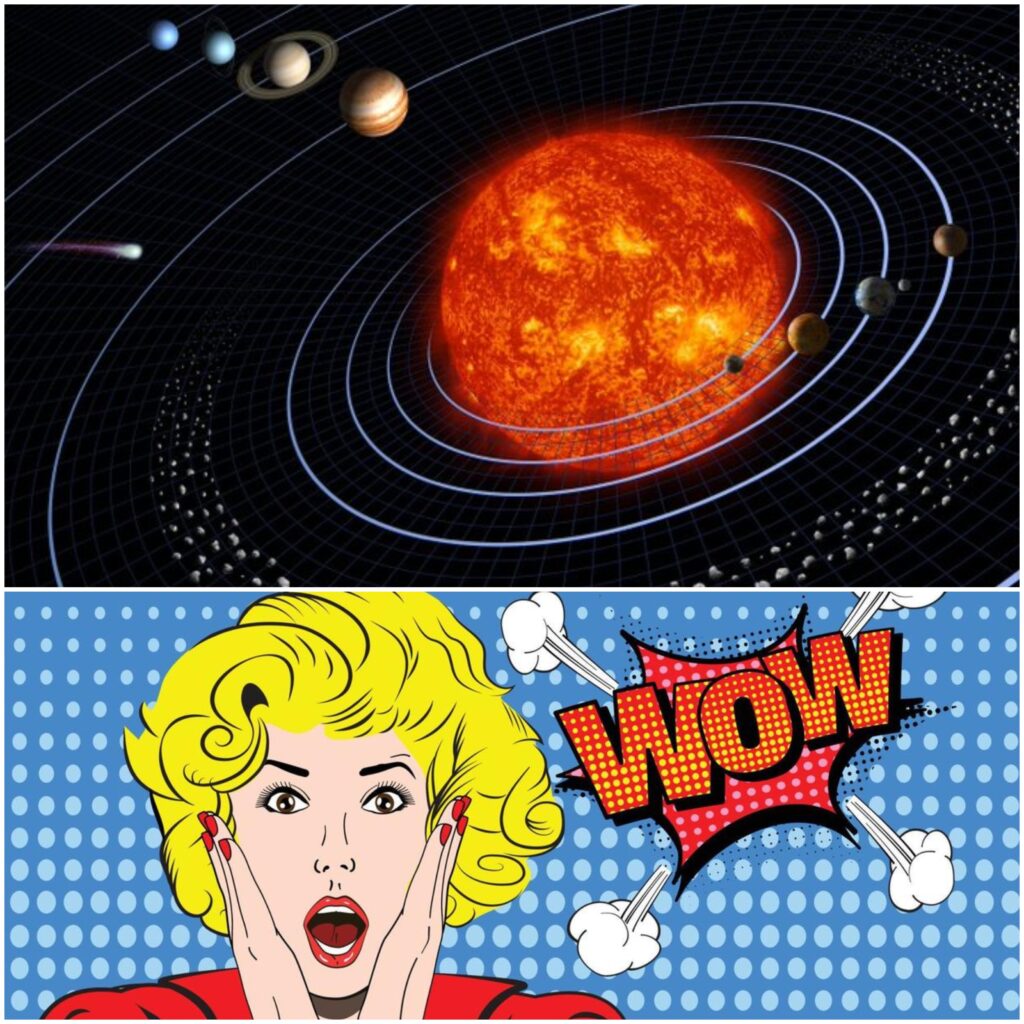The Solar System is a wonderful part of the cosmos in which we live. It consists of the Sun, eight planets, moons, comets, asteroids, and much more, all of which cooperate with one another.
Every planet and object has unique features that make learning about them fascinating.
The Solar System is full of wonders just waiting to be found, from the giant Sun to the tiny Pluto.
Let’s study some amazing facts about the solar system and journey.

Facts About Solar System
1. The Sun is the Boss of the Solar System
Approximately 99.8% of the Solar System’s weight is supported by the Sun, which is the largest object in the system.
All of the planets, moons, and other celestial bodies orbit it due to its powerful gravity. Approximately 1.3 million Earths might fit inside it due to its size.
2. The Solar System is Huge
The heliosphere, the outermost layer of the Solar System, is 100 times as large as the distance between Earth and the Sun.
Solar winds and microscopic particles abound here. The Oort Cloud is a chilly, frigid area that lies beyond this.
3. Mercury -The Smallest Planet
Mercury is the smallest and nearest planet to the Sun. Because it lacks air, its surface becomes extremely hot during the day and extremely frigid at night. It is not the warmest planet, given its proximity to the Sun.
4. Venus -The Hottest Planet
Because of its dense clouds, which act as a greenhouse to retain heat, Venus is the hottest planet. Metal can be melted by the surface’s extreme heat.
Venus is frequently referred to as the “Morning Star” due to its extreme brightness.
5. Earth -Our Home
As far as we are aware, life only exists on Earth. It has water covering most of its surface, air that humans can breathe, and a barrier that shields us from the Sun’s harmful radiation.
6. Mars -The Red Planet
Because of the rust-like dust covering its surface, Mars appears red. Olympus Mons, the tallest volcano in the Solar System, is located there.
According to scientists, Mars may have once supported life because it has lakes and rivers.
7. Jupiter -The Giant Planet
The largest planet, Jupiter, is so huge that more than 1,300 Earths could fit inside it.
A storm that has been raging for hundreds of years is represented by the huge red spot on it. Jupiter has about 80 moons as well.
8. Saturn -The Ringed Planet
Saturn is recognized for its stunning ice, rock, and dust rings.
Being primarily composed of gas, this second-largest planet could float in water. Titan, which is larger than Mercury, is one of its more than 60 moons.
9. Uranus -The Sideways Planet
Unlike other planets, Uranus rotates on its side, making it special.
The presence of methane gas in the air gives it a blue-green appearance. Uranus takes 84 years to complete one orbit around the Sun and is extremely cold.
10. Neptune -The Windy Planet
The fastest winds in the Solar System, reaching 1,200 miles per hour, are found on Neptune, the planet that is furthest from the Sun.
It has a big storm known as the Great Dark Spot and appears blue due to methane gas.
11. Pluto -The Dwarf Planet
Previously referred to as a planet, Pluto is now referred to as a dwarf planet.
It is far away, very little, and covered in rocks and ice. A single orbit of the Sun takes Pluto 248 years.
12. The Asteroid Belt
The asteroid belt is a region of rocks that lies between Mars and Jupiter.
While some asteroids are hundreds of miles broad, others are tiny, like a pebble. Ceres, the largest, is a dwarf planet as well.
13. Comets -The Space Snowballs
Comets are composed of rocks, ice, and dust, and when they approach the Sun, they glow brightly. Their tails can reach a length of millions of miles.
The most well-known is Halley’s Comet, which comes around once every 76 years.

14. Moons Everywhere
There are moons on most planets, and some have many, Jupiter and Saturn each contain more than 50 moons, but Earth only has one.
Oceans may even exist under the surface of several moons, such as Titan and Europa.
15. The Kuiper Belt
The Kuiper Belt is a ring of ice objects located beyond Neptune.
Pluto and other small planets reside here. Comets, according to scientists, originate in this icy, far-off area.
Bottom Line
The Solar System is a genuinely amazing place, full of beauty and mystery.
Every region of it, from the cold borders of the Kuiper Belt to the blazing Sun at its core, has something fascinating to teach us.
Understanding the Solar System attracts our interest in the limitless possibilities that lie beyond; in addition to helping, we realize our place in the cosmos.
It acts as a reminder of just how big and amazing the universe is.
This is what our solar system really looks like – CLICK HERE
Read Also: Facts About the Winchester Mystery House
